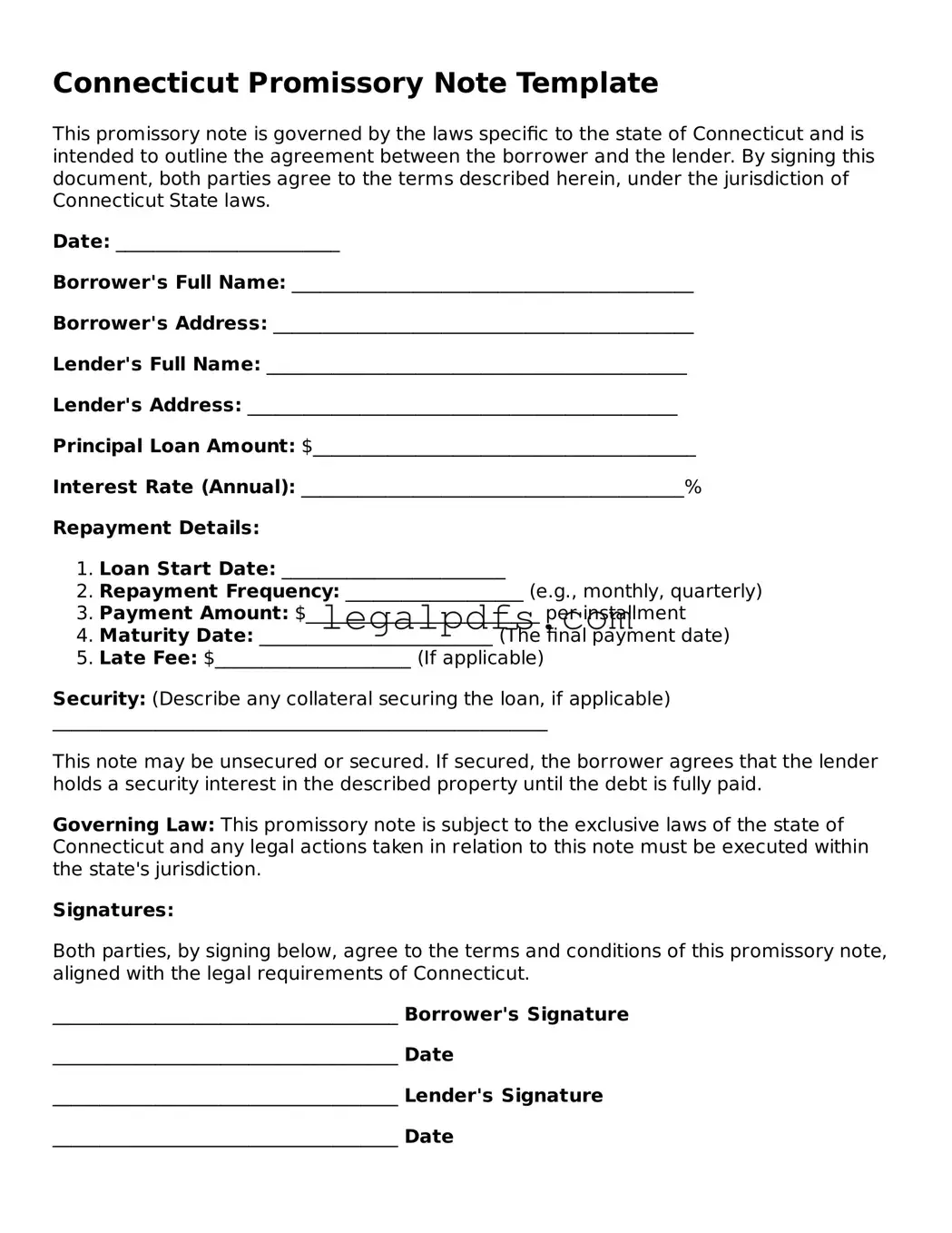Connecticut Promissory Note Template
This promissory note is governed by the laws specific to the state of Connecticut and is intended to outline the agreement between the borrower and the lender. By signing this document, both parties agree to the terms described herein, under the jurisdiction of Connecticut State laws.
Date: ________________________
Borrower's Full Name: ___________________________________________
Borrower's Address: _____________________________________________
Lender's Full Name: _____________________________________________
Lender's Address: ______________________________________________
Principal Loan Amount: $_________________________________________
Interest Rate (Annual): _________________________________________%
Repayment Details:
- Loan Start Date: ________________________
- Repayment Frequency: ___________________ (e.g., monthly, quarterly)
- Payment Amount: $_________________________ per installment
- Maturity Date: _________________________ (The final payment date)
- Late Fee: $_____________________ (If applicable)
Security: (Describe any collateral securing the loan, if applicable) _____________________________________________________
This note may be unsecured or secured. If secured, the borrower agrees that the lender holds a security interest in the described property until the debt is fully paid.
Governing Law: This promissory note is subject to the exclusive laws of the state of Connecticut and any legal actions taken in relation to this note must be executed within the state's jurisdiction.
Signatures:
Both parties, by signing below, agree to the terms and conditions of this promissory note, aligned with the legal requirements of Connecticut.
_____________________________________ Borrower's Signature
_____________________________________ Date
_____________________________________ Lender's Signature
_____________________________________ Date
Note: Ensure all provided information is accurate and complete. Seeking legal advice to understand the full implications of this promissory note is recommended.
